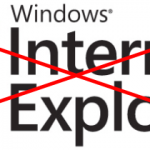 Redmond, Washington — In an attempt to expand its health care services for people on the go, Microsoft Corporation over the weekend said that it has partnered with iTriage, a healthcare software maker to integrate Microsoft’s HealthVault personal healthcare record (PHR) with its iPhone and Android apps next year enabling users to access their health records stored on Microsoft’s service directly from their mobile devices.
Redmond, Washington — In an attempt to expand its health care services for people on the go, Microsoft Corporation over the weekend said that it has partnered with iTriage, a healthcare software maker to integrate Microsoft’s HealthVault personal healthcare record (PHR) with its iPhone and Android apps next year enabling users to access their health records stored on Microsoft’s service directly from their mobile devices.
iTriage just got bigger, as the mobile app developer unleashed a new free iPhone app that will allow users to access Microsoft HealthVault patient health records from the iPhone. An Android version is on the anvil and will be out in a few weeks, company officials say.
Users will now be able to access their personal medical information from Microsoft’s HealthVault personal health record platform through a new Windows Phone 7 application.

Peter Hudson, MD and co-founder of iTriage, said that, “We believe Microsoft Corporation HealthVault PHR incorporation into iTriage will give consumers a convenient and easy way to access their health information anywhere, anytime”.
HealthVault empower patients to handle chronic conditions such as diabetes and hypertension, in addition to keeping track of medication schedules and fitness goals. Besides, they can also recall their health histories and lab test reports from doctors’ versions of their electronic health records (EHRs).
Sean Nolan, Microsoft’s chief architect of health solutions, blogged about the new WP7 app, which the company released on Dec. 13.
“The app is intended to be a handy general-purpose tool–optimized for use whenever you need to quickly save or look up health information,” Nolan wrote.
“PHRs offer consumers a great way to monitor their health. Our iTriage vision includes being the mobile aggregator for multiple PHRs in the future,” hudson added.
The iTriage app already permits users to access information on symptoms, medical conditions, medication and procedures directly from their mobile phones and even allows users to locate physicians and other caregiver where they can get their medical condition treated. Now iTriage execs want to take the lead in consumer-oriented, mobile-enabled PHRs.
He may be on the right track, according to mHealthWatch, which indicates that “the integration with PHRs will round out iTriage’s functionality to create a pretty powerful end-to-end mHealth consumer application, with HealthVault integration likely the first of many.”
Using the cloud application, mobile users will be able to effortlessly monitor immunization dates, prescription histories, insurance details and procedures they have undergone, such as knee surgery or X-rays. Patients can also use the app to share vital data such as blood pressure, weight and blood sugar with a doctor or, in the case of parents, a school nurse.
“So while I have been boasting about our new HealthVault app for Windows Phone, the peanut gallery here has been grumbling that we need a great iPhone app too,” Nolan wrote.
On his blog, Nolan highlighted a few apps for HealthVault that now work on the iPhone.
Interestingly, a company named mySkin has formulated a HealthVault-enabled iPhone app that empowers patients to capture images of skin injuries and upload the information to the PHR platform. Patients can answer questions about their skin ailment and then share the information with dermatologists. Patients can also email the data to “skin scientists” through mySkin for a clinical opinion.
Microsoft also presents software development kits (SDKs) for Apple iOS and Google Android. However, WP7 lacks the customer familiarity of the Apple and Google mobile platforms.
Moreover, iTriage is providing a way for customers to transfer their data from Google Health to HealthVault, after Google’s announcement that it will shut down its PHR service. Also, the app has been adopted by more than 3 million people and is available from the iTunes App Store and Android Market as a free download.


